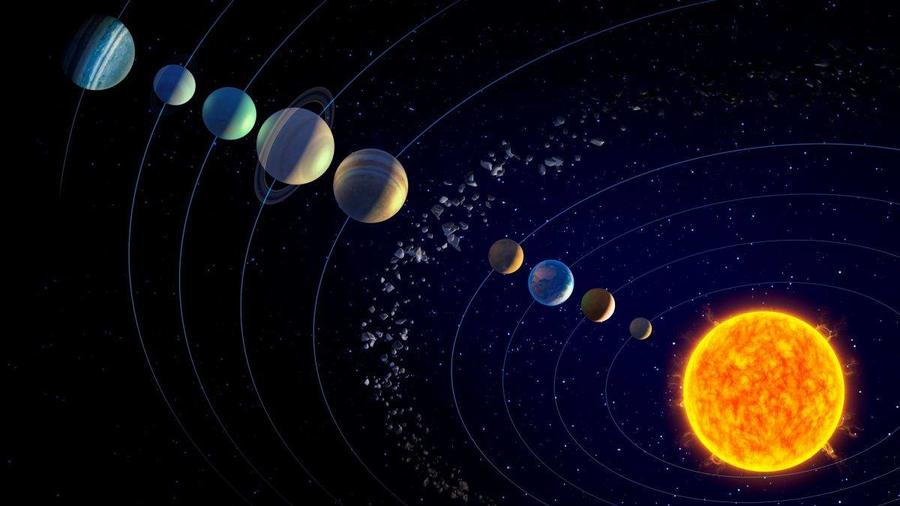Unique astronomical phenomenon planets line up around the sun
In an astronomical phenomenon that occurs every 19 years , amateur astronomers have observed a celestial treatment as of Friday, where the five planets visible to the naked eye line up in the order of their distance from the sun through the pre-dawn sky.
For those who can face the early start, and have an unobstructed view of the horizon to the east and southeast, Mercury, Venus, Mars, Jupiter and Saturn can all be seen before fading, Mercury, in the sunrise glow.
It is not uncommon to see two or three planets close together, but the five planets visible to the naked eye have not appeared in order, as viewed from the northern hemisphere, since December 2004.
The rare opportunity that happens every 19 years
The five planets line up in front of the sun - Image via theguardian
This is a rare opportunity to see the same thing close to home, with all five planets 'naked eye' in our solar system at once, said Beth Beiler, personal lead for exoplanet characterization at the University of Edinburgh Institute for Astronomy. The planets of the Solar System orbit the Sun in a remarkably narrow plane, which means that when viewed from Earth, they appear to lie near an imaginary line in the sky called the ecliptic, although it may be difficult to see them all until later in the month. .
Venus and Jupiter seemed easier to see, said Dr. Greg Brown, public astronomy officer at the Royal Museums Greenwich, with Venus above the horizon from around 4am UK time and Mars and Jupiter seeing from around 2.45am.
Saturn will rise above the horizon at about 1.30 am, but Mars we cannot see at twilight. It only rises at about 4.30am, when it is hard to see in the pre-dawn light, and will still be close to the horizon.
Mercury appears at the end of June within this lineup
Illustrative map of the phenomenon of the alignment of the five planets - image from (theguardian)
According to Dr. Samantha Rolfe, chief technical officer at the University Observatory: Mercury will be easy to spot later in June in this alignment, as it rises into the sky and lights up. On June 24, the five planets will be joined by a crescent moon between Venus and Mars, forming an "extraordinary spectacle", Hertfordshire. Since Mercury will be very faint at dawn, Rolf recommends using an app like Stellarium to find its position in the sky.
"You don't need binoculars or a telescope if you don't have one — just enjoy the view from wherever you can, even if you can't see all five from your location," Rolfe said. “This is a rare sight that can help us feel connected to nature and the world around us, and enjoying the night sky in general is a great wellbeing exercise.
"Knowing that so many people look up at the same sky, as our ancestors did, is something worth watching. Check the weather forecast for clear or partly clear skies, and set an alarm - it would be worth getting up."
https://www.sayidaty.net/node/1419901/%D8%A8%D9%84%D8%B3/%D8%AD%D9%8A%D8%A7%D8%AA%D9%86%D8%A7/%D8%B8%D8%A7%D9%87%D8%B1%D8%A9-%D9%81%D9%84%D9%83%D9%8A%D8%A9-%D9%81%D8%B1%D9%8A%D8%AF%D8%A9-%D8%A7%D9%84%D9%83%D9%88%D8%A7%D9%83%D8%A8-%D8%AA%D8%B5%D8%B7%D9%81-%D8%AD%D9%88%D9%84-%D8%A7%D9%84%D8%B4%D9%85%D8%B3#.YpxX-Msq8eM.facebook




